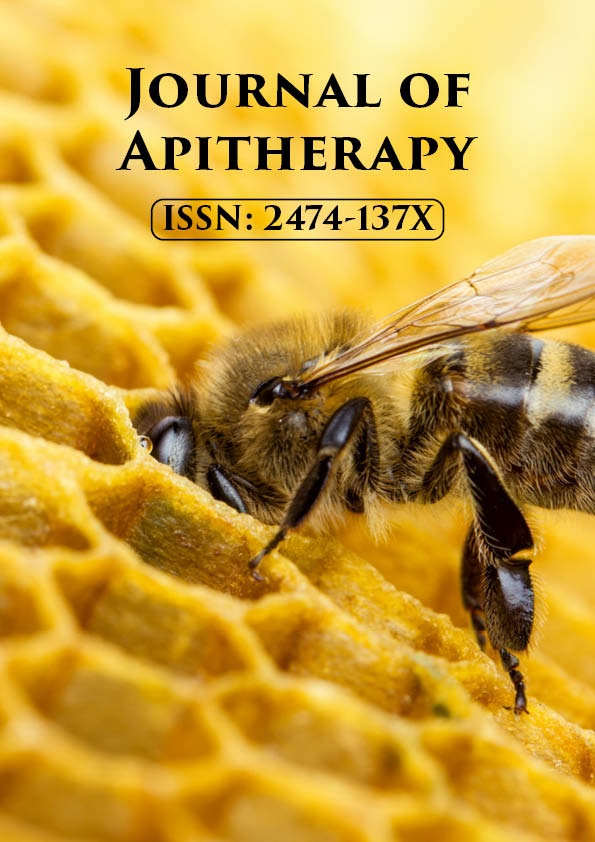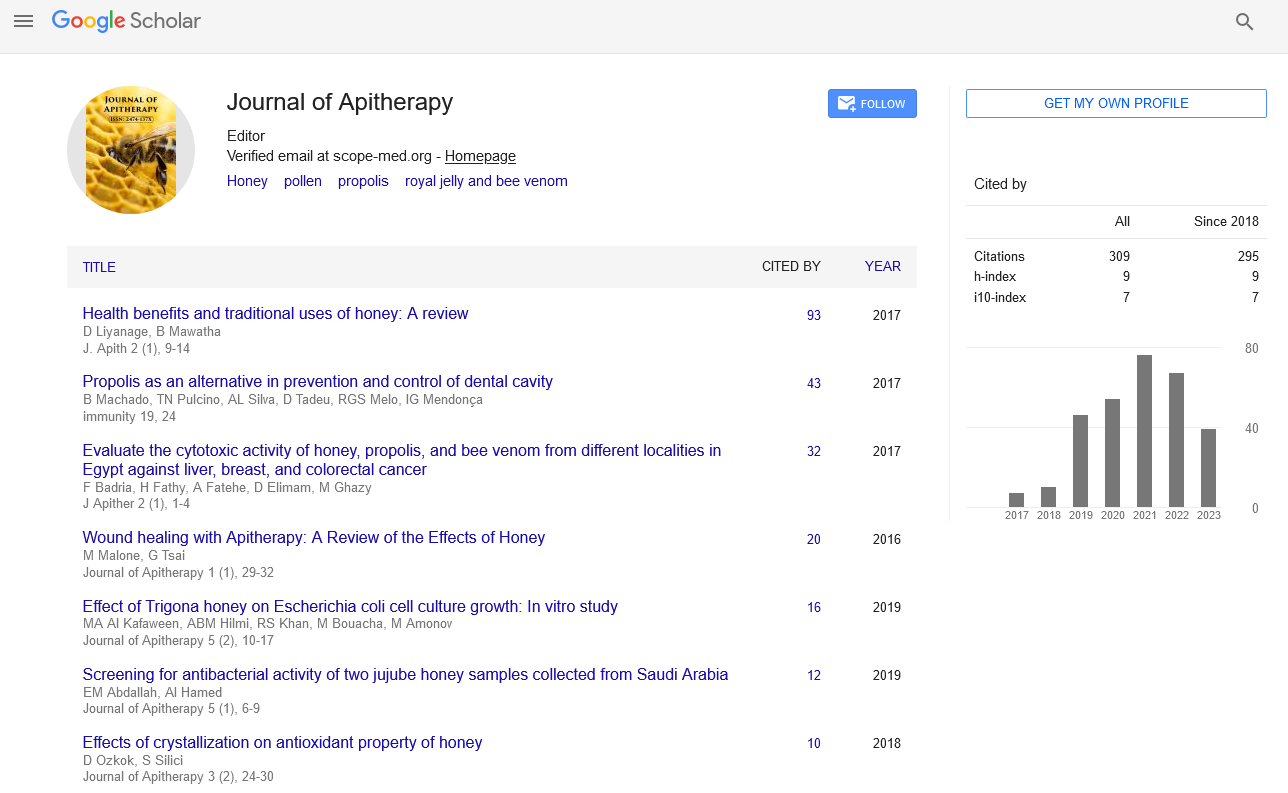Commentary - Journal of Apitherapy (2022)
The Important Role of Honey in Modern Medicine
María Sancho*María Sancho, Department of Biotechnology, Burgos University, Burgos, Spain, Email: mtsengho@ubu.es
Received: 04-May-2022, Manuscript No. JAPITHERAPY-22-68144; Editor assigned: 06-May-2022, Pre QC No. JAPITHERAPY-22-68144 (PQ); Reviewed: 23-May-2022, QC No. JAPITHERAPY-22-68144; Revised: 30-May-2022, Manuscript No. JAPITHERAPY-22-68144 (R); Published: 06-Jun-2022
Description
Honey has a very long history of use. Due to its nutritional and medicinal benefits, honey has been utilized for centuries. Honey has been consumed in a variety of ways, including as a sweetener and flavoring ingredient. The production of honey is widespread. Honey contains carbohydrates in the form of fructose and glucose monosaccharides, which are the most significant nutrients. As an antioxidant, anti-inflammatory, and anti-bacterial agent, honey has a significant impact on wound healing and promotes the adhesion of skin grafts. The scientific community has recognized the value of honey, and there is strong evidence to back up its antioxidant and antibacterial properties, ability to prevent coughs, one of the most well-liked functional foods is honey, which has reportedly been consumed since the dawn of civilization. Numerous religions and conventional therapies support its ability to safeguard one’s health. As a wound-healing, anti-inflammatory, and anti-diabetic agent, honey is given for a variety of medical ailments in unani medicine. Honey is becoming more and more popular today because of its numerous health advantages and low glycemic index. The industry suffers significant financial losses due to honey adulteration, and it can be challenging to identify different types of syrup adulteration. There is no question that the study on honey adulteration has scientific value for preserving the honey and syrup markets and safeguarding the consumers’ legal rights and interests. Honey adulteration results in the production of inferior goods for sale. The goal of the study was to develop a straightforward, precise, and quicker approach for tracking honey’s botanical and geographic origin than the traditional melissopalynology alone. In this study, the botanical origin of 42 samples of honey from various sources was determined using melissopalynology and their unique protein patterns were investigated by electrophoresis on SDS polyacrylamide gels. The upper aero-digestive tract of the honey bee and flower nectar combine to form honey, which is then concentrated inside the bee hive through a process of dehydration. Depending on the plant source, honey can have an extremely complicated chemical makeup. Since ancient times, it has been utilised as food and medicinal. According to drawings from the Stone Age, humans have been using honey for almost 8000 years. Natural honey plays a significant part in traditional medicine, but during the past few decades, it has also been the topic of laboratory and clinical research by a number of research groups, earning it a place in contemporary medicine. According to reports, honey inhibits the growth of about 60 different bacterial species as well as several fungal and viral species. Due to a variety of components, including phenolics, peptides, organic acids, enzymes, and Maillard reaction products, honey has a significant antioxidant capacity that is beneficial in many disease states. Additionally, several gastrointestinal, cardiovascular, inflammatory, and neoplastic conditions have been treated with honey. Fresh bee’s honey is used to treat a variety of conditions, including eye disorders, throat infections, bronchial asthma, tuberculosis, hiccups, thirst, dizziness, fatigue, hepatitis, worm infestation, constipation, piles, eczema, wound healing, and ulcers. It is also used to provide weak individuals with a nourishing, easily digestible meal. It supports mental wellness, semen, and is used cosmetically. Old bee’s honey is used to prevent meat from spoiling and to cure rheumatoid arthritis, obesity, diabetes, and diarrhoea. Bee’s honey, which is widely used in cosmetic treatments, is made into facial washes, skin moisturisers, hair conditioners, and acne treatments. Honey made by bees is one of nature’s finest creations and has a variety of advantageous uses.
Copyright: © 2022 The Authors. This is an open access article under the terms of the Creative Commons Attribution NonCommercial ShareAlike 4.0 (https://creativecommons.org/licenses/by-nc-sa/4.0/). This is an open access article distributed under the terms of the Creative Commons Attribution License, which permits unrestricted use, distribution, and reproduction in any medium, provided the original work is properly cited.







